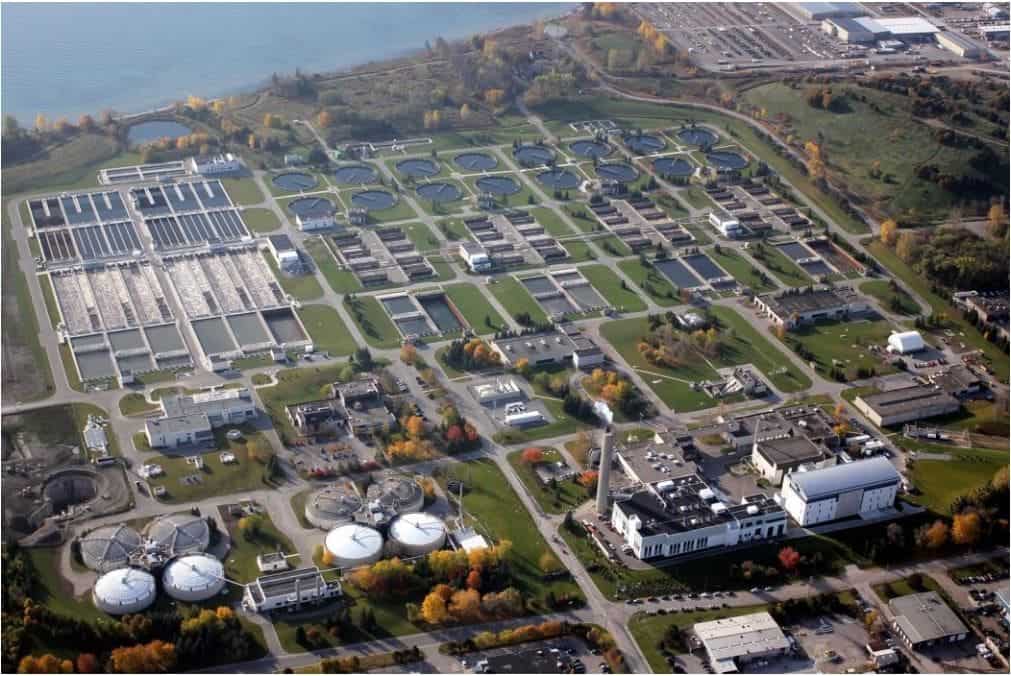Duffin Creek wastewater plant in Pickering to get capacity upgrades to meet projected growth
Published October 26, 2022 at 10:33 am

Legislation that would cut back on red tape and accelerate new home construction in Ontario is also expected to do the same with the infrastructure that goes with it, Environment, Conservation and Parks Minister David Piccini announced Tuesday.
The Supporting Growth and Housing in York and Durham Act, 2022 legislation would facilitate “expedited” improvements to the Duffin Creek wastewater treatment facility that is co-owned and operated by York and Durham Regions.
The Province has set housing targets (that need to be reached by 2031) that aren’t going to happen without improvements to sewer and water and the like, Piccini said.
“Both Regions want and demand certainty to their growth. If we’re going to build all those houses we need the infrastructure in place to support that growth and intensification.”
The Duffin Creek Water Pollution Control Plant is a top performing wastewater treatment facility located on Pickering’s waterfront; part of the York Durham Sewage System. It treats wastewater from 80 per cent of the residents and businesses in York Region and from everyone in the Town of Ajax and City of Pickering in Durham Region on a shared contract between the two regions.
A new forced watermain and other improvements to the facility are in the cards for Duffin Creek as the Province funds capacity expansion of the facility. The plant is co-owned and operated by both York and Durham regions.
York takes about 80 per cent of the flow from the plant but Durham will also be able to take advantage of the capacity improvements, Piccini said.
“It always works better when both regions work together,” he added. “This gives both regions a better chance of meeting their growth projections.”
Following recommendations of the York Region Wastewater Advisory Panel, the Province determined the expansion of this infrastructure is the most effective option available to meet the new housing demands, leveraging existing wastewater treatment services under the co-ownership agreement between Durham and York.
“Expansion of this shared critical wastewater infrastructure for York and Durham Regions is needed to support their significant population housing, and economic growth. Our government is proposing a solution that ensures the most robust wastewater treatment as these communities continue to grow,” Piccini explained.
The decision was made easier when the government killed a proposal by York Region to send wastewater from its northern communities to a new treatment plant on Lake Simcoe.
The Duffin Creek plant currently operates at approximately 50 per cent capacity and the government’s plan would add an additional 12 per cent to the current flow levels. No price tag has been attached to the improvements yet but over the past 25 years governments at all levels have invested more than $850 million in the facility.
Piccini called it “one of the best performing wastewater facilities in the province” and said phosphorous limits at the plant are significantly lower than those at other wastewater facilities in Ontario and will continue to be reduced as the facility implements additional upgrades between now and 2030.
The facility routinely achieves world-class standards for high quality treatment, phosphorus control and protective measures for the surrounding environment and watershed, with a capacity to process 630 million litres per day.
“We need to start planning today for the future, And that’s what we’re doing, Piccini said. “It’s the right decision.”
Ontario is also making improvements to other wastewater and stormwater infrastructure along the Lake Ontario shoreline, investing in the latest technology for real-time wastewater monitoring. In January 2022, Ontario invested $15 million to build, upgrade and rehabilitate storm and wastewater infrastructure in the Lake Ontario basin. This includes optimizing plants, improving local sewer systems and investing in green infrastructure. Durham Region is receiving $836,590 through this program which will help improve water quality in Lake Ontario.
INdurham's Editorial Standards and Policies




